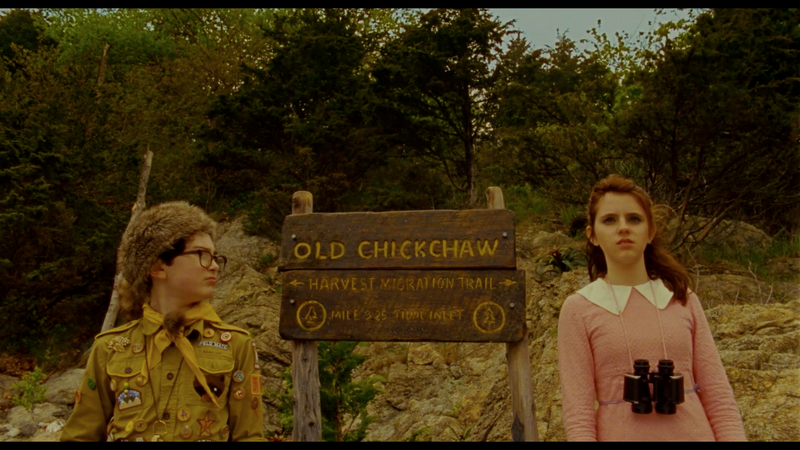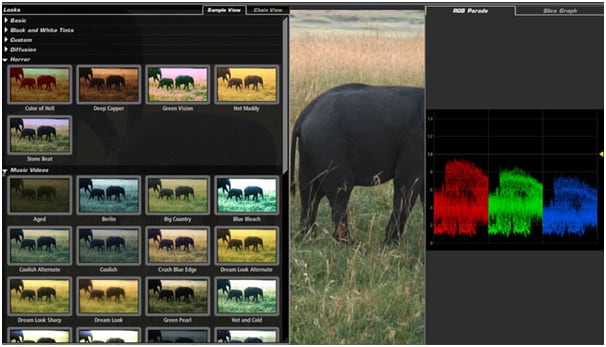Moonrise Kingdom Review

In 2012 I remember laying on my parents’ bedroom floor when
they decided to watch a new movie that recently became available on onDemand. It
was the first time I watched “Moonrise Kingdom” and artistic coming of age
story about an orphan khaki scout named Sam Shakusky and borderline psychotic
Suzy Bishop. The movie is directed by Wes Anderson who is most well-known for
his distinctive visual and Narrative style, specifically his use of flat space camera
moves, obsessively symmetrical compositions, knolling, snap-zooms,
slow-motion walking shots, a deliberately limited color palette, and hand-made
art direction often utilizing miniatures. This makes his works extremely intriguing
to younger and old eyes because of its beautiful aesthetic. All these years
later and “Moonrise Kingdom” still has a special place in the back of my head so I decided to rewatch it.

Due to their circumstances a twelve years old boy and a girl who fall in love with each other
runaway from their homes.
At the beginning of the movie 'Moonrise Kingdom' produced by Wes Anderson the viewer
sees Suzy's home and a first impression of the relationships between the family members.
After that you get to know about Sam's surrounding who lives in a scout camp right now. The
camp master embodies discipline and strength. All children have to wake up to eat breakfast.
In this moment they noticed that Sam is missing. He left a note in his tent which says he left
the camp and he will never come back. The scouts start a posse to find Sam. Meanwhile
captain Duffy Sharp who helps to find Sam contacts his previous foster parents. In this
conversation the viewer catches a lot of information that Sam has emotional problems and is
not longer welcome in the house of the foster parents.
Sam and Suzy, got to know each other on a theater play, meet on a meadow to escape
together to an unknown bay. On their adventure trip through the nature Sam takes care of
Suzy that she does not hurt herself. They converge and begin to trust each other. In the
meantime every scout khaki, the police as well as Suzy's parents are looking for the two
adventurers. Thereby the relationship between Suzy's parents and their attitude towards their
own daughter becomes obvious. When they are found by the scout khakis they defend
themselves and manage to flee to their secret bay. Out there Sam and Suzy enjoy their
togetherness and come closer. In the next morning the scout khakis find them again in their
tent and they have to go back. Both become separated from each other. Sam is threaten by
going into the orphanage and Suzy's mother reacts uncomprehending and prohibits any
contact to Sam. Before Sam has to leave to an orphanage the other scout khakis start to think
about his situation. Their result is that Sam is not so different from themselves and that
everyone has blemishes. They resolve to help him to flee again. Together with Suzy Sam and
the scout khakis flee to St. Jack Wood Island where Sam and Suzy get married. All children
hold together. The situation gets out f control because everyone is looking for the troop. Plus,
the long-awaited storm arrives. Sam and Suzy's last chance to escape is to jump from a
building, but Duffy Sharp save them by telling that he adopts Sam.
In the end the viewer can see Sam hanging around at Suzy's place. When his new
adoptive father picks him up Sam says to Suzy: 'See you tomorrow!'.

There’s a lot of great performances from known actors in this. Bill Murray delivers a great performance as Walt, Suzy’s father. There’s a certain sadness to Walt that Murray really brings to the screen. The way he speaks, moves, and just the way he looks evokes a sense of disappointment. Murray also plays off co-star Frances McDormand (who’s also quite good in this) very well. Not to mention several of the film’s funniest bits come from Murray. Edward Norton delivers one of the best performances in my opinion. It’s hilarious seeing Norton play such a goofy character with so much conviction. Goofy as his character is though, there are points where you really sympathize with him, and eventually respect him. Bruce Willis is great as a lonely police captain, and actors Jason Schwartzman, Tilda Swinton, and Harvey Keitel all of very fun cameos.
What I didn’t expect to realize the second time around was the quality of performances from the child actors. Jared Gilman and Kara Hayward are both great as the lead protagonists. Both are very likable, and they have good chemistry together. You root for them to succeed throughout the film. I also like how the film didn’t avoid the darker sides to their characters. Likable though they may be, these are two seriously disturbed children, and the film never pretends that they’re not. The performances from the other children in the cub scouts are also solid.

Stylistically, this film has a lot going for it. There are several impressive tracking shots, but almost every shot has something interesting about it. I also really like what Anderson and cinematographer Robert Yeoman did with the color scheme. Some scenes had an almost golden like shine to them, while the film’s climax had a really cool dark blue thing going on.
All in all I would rate this movie up there with my all time favorites. As a kid I enjoyed the movie because it was abstract and different but I never understood the true darkness behind all the humor until I rewatched it. The cast, script, soundtracks, and director made this film nearly flawless.
Work Log:
Monday- No School
Tuesday- researched and watched videos of how to set up and use a lavalier mic to its full potential. I also went around the school to get some B-roll footage in case I need more clips later in the project.
Wednesday- Mr. Bomboy taught me how to use the lavalier mic including setup and which cables to get and attach it to. Then I got my camera, sd card, mic and chords, and tripod and went to the studio and set up everything. Then I recorded myself talking with the mic on.
Thursday- I downloaded the footage I got yesterday and listened to the audio which was a little rough even with the mic. So, I worked on manipulating the audio and adding a few affects to get rid of background hum and audio grain.
Friday- Today I storyboarded what angles I will get of Jack when I shoot the interview and what shots I want to capture of him playing his music.
 Color Correction is the process of changing every clip in a sequence to get good exposure and good Neutralization is the process with in this process when a clips colors are neutralized and flattened to allow an editor to color grade footage with a clean slate, bringing out the colors and schemes they want to instead of working with what is already there. Temperature is adjusted by implementing more orange to even out a cold bluish clip or vise versa, the allowing the editor to come in an give it the temperature they want to convey in the shot. Instead of editing footage based on how it appears to the human eye, SCOPES help show the balance of colors and contrast and make correcting easier by leveling out such features.
Color Correction is the process of changing every clip in a sequence to get good exposure and good Neutralization is the process with in this process when a clips colors are neutralized and flattened to allow an editor to color grade footage with a clean slate, bringing out the colors and schemes they want to instead of working with what is already there. Temperature is adjusted by implementing more orange to even out a cold bluish clip or vise versa, the allowing the editor to come in an give it the temperature they want to convey in the shot. Instead of editing footage based on how it appears to the human eye, SCOPES help show the balance of colors and contrast and make correcting easier by leveling out such features.








